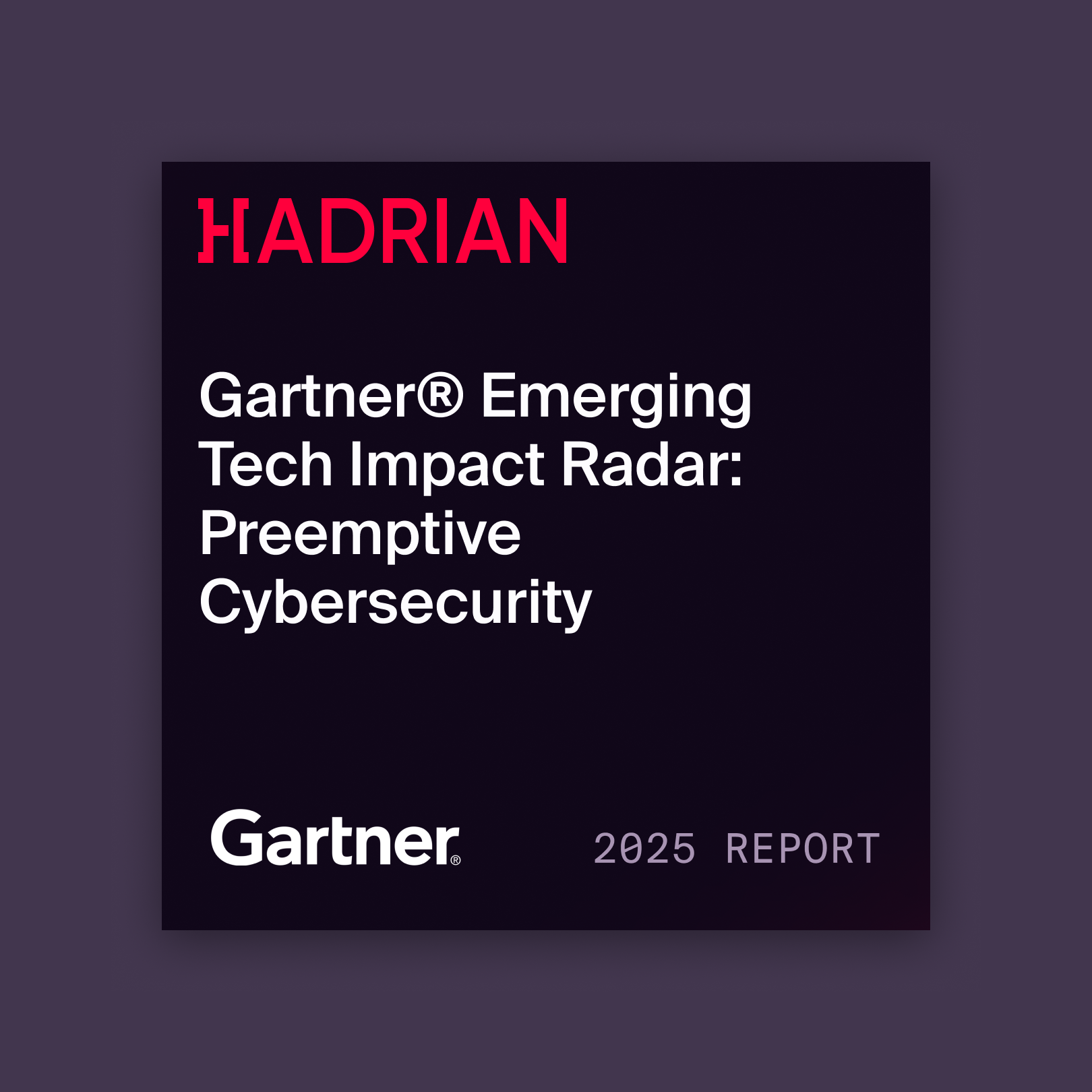.avif)
“The attack surface visibility market is dying.” There is a lot of this sentiment going around lately. But is it exactly true?
Operating systems, cloud-based resources, virtual machines, and web applications are just a handful of the types of resources that businesses have to mind. Every time one of these assets is added, an organization’s attack surface grows and it doesn’t matter if companies are aware of them or not. If they are connected to the internet, cyberattackers could find them.
What does attack surface visibility mean?
An organization’s attack surface encompasses all the systems, networks, and applications that a malicious actor could potentially use as part of a cyberattack. It includes every piece of hardware and software. Given that digitalization is being pursued by the vast majority of companies (research by McKinsey & Company indicates 90% of all organizations are currently undergoing some kind of digital transformation) attack surfaces are expanding fast.
In the late 1990s, managing an organization’s attack surface primarily meant configuring and patching on-premise systems. Then, as the internet went mainstream in the latter part of that decade, cyberattackers gained many more opportunities to deploy malware, conduct data breaches, and target networks. Technological evolution has only seen this trend continue. Cloud computing came along to expand the attack surface further, then the Internet of Things, APIs, microservices, and third-party supply chain risk added to the problems facing security teams.
Attack surface visibility means having a clear view of every internet-facing asset that presents a potential threat but it’s about much more than simply compiling a list of technologies. Comprehensive attack surface visibility is only achieved by continuously discovering and cataloging all internet-facing assets, as well as monitoring their usage, their connections, and possible vulnerabilities.
Even so, while attack surface visibility may be essential, it is merely the beginning of external asset management. Effective attack surface visibility enables companies to be proactive in the face of threats; it is the first step on the road to risk reduction. But, to truly safeguard your assets, there are other methods that businesses should employ as well.
Why attack surface visibility isn’t enough
Attack surface visibility may be crucial to an effective cybersecurity strategy, but simply having a clear view of an organization’s assets won’t necessarily plug vulnerabilities. In fact, listing every discovery can increase the “noise” cybersecurity employees have to deal with, potentially leading to alert fatigue that actually makes it harder for them to tackle the genuine risks within their corporate network.
Cybersecurity expert Dr. Anton Chuvakin outlines some of the very real problems that alert fatigue can cause, with 70% of SOC teams reporting they’ve become emotionally overwhelmed by the volume of security alerts they face. Unsurprisingly, this leads to 43% of these teams occasionally or frequently turning off alerts. It’s easy to see how attack surface visibility, without context or validation, can make the noise worse for security personnel.
But simply ignoring alerts or hoping they’re false positives isn’t really an option either. Long before attack surface visibility became a priority for CISOs, the 2013 Target breach is a case in point. Security alerts did flag a potential problem early on, but they weren’t prioritized by security personnel, allowing malicious actors to operate undetected for several weeks before remediation efforts began. In the end, sensitive information relating to more than 40 million customers was compromised, resulting in significant financial and reputational damage.
{{cta-continuous-discovery}}
The critical next steps
If attack surface visibility is only the first step to plugging the vulnerabilities in your network, it’s because visibility needs to be followed up by validation and prioritization. Businesses should implement Adversarial Exposure Validation (AEV), a process of actively emulating attacker behavior to confirm if an exposure is truly exploitable in a live production environment. It means your SOC team finds out about real-world risk, not just poorly configured assets that could one day represent a problem.
Part of the reason why AEV represents such a useful next step is that it adopts a hacker’s perspective. It goes a step further than attack surface visibility by identifying ways an attacker could exploit assets in a real-world attack scenario. It takes an outside-in look at assets and simulates the tactics of malicious actors to point out not only what is vulnerable, but also how those vulnerabilities can be weaponized.
The other critical next step is prioritization. Once exposures are validated, they can then be prioritized based on real business impact, not just as generic “risks.” This allows cybersecurity teams to direct their limited resources appropriately, focusing on the flaws that could do significant damage.
If businesses want to truly safeguard their networks, they should supplement comprehensive attack surface visibility tools with continuous validation and prioritization as part of proactive external asset management. This integrated approach enables organizations to prevent lateral movement and preempt breaches before they can cause damage. It’s about more than just seeing a potential threat, but proactively doing something about it.
Moving beyond simply seeing
While strong attack surface visibility is a non-negotiable first step, true security requires moving beyond just seeing. External Attack Surface Management (EASM) depends on not just continuously scanning for exposed assets but also providing the context security professionals need to address them.
Effective external asset management demands a continuous cycle of discovery, validation, and prioritization to proactively eliminate exposures and stay ahead of adversaries. They never stop looking for vulnerabilities to exploit, so security teams can never stop looking for ways to thwart them.
With its agentic AI-driven continuous asset discovery, Hadrian provides SOC teams with the comprehensive attack surface visibility they need to identify potential threats. More than that, though, its threat exposure management tools optimize remediation efforts, reducing the mean time to response by 80%.
Attack surface visibility is important to cybersecurity, but it is not much of a defense by itself. After detecting a vulnerability, it needs to be contextualized, including its severity, impact, proof of concept, and remediation steps. Only then can SOC teams avoid alert fatigue and focus on the risks in their attack surface that truly matter.
{{cta-aev}}







